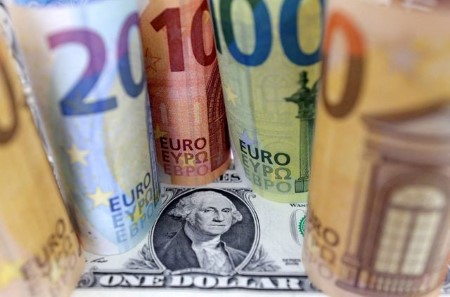




Philippines Trade Update: Trade trajectories trend along
 DOWNLOAD
DOWNLOAD

Policy Rate Updates: Double cut finale
 DOWNLOAD
DOWNLOAD

Monthly Economic Update: One for the road
 DOWNLOAD
DOWNLOAD


Hedge funds dismiss OPEC+ action to support oil prices: Kemp

LONDON, Dec 11 – Portfolio investors have rarely been so bearish on the outlook for crude oil, especially in the United States, as traders conclude Saudi Arabia and its OPEC+ partners can’t or won’t do more to reduce output in the short term.
Hedge funds and other money managers sold the equivalent of 58 million barrels in the six most important petroleum futures and options contracts over the seven days ending on Dec. 5.
Fund managers have sold petroleum in nine of the most recent 11 weeks reducing their position by a total of 385 million barrels since Sept. 19, according to exchange and regulatory records.
The combined position had been cut to just 295 million barrels (7th percentile for all weeks since 2013) on Dec. 5 down from 680 million (65th percentile) on Sept. 19.
Continuing the recent pattern, sales were focused on crude contracts (-38 million barrels) with sales in both Brent (-24 million) and NYMEX and ICE WTI (-14 million).
Funds had reduced their net position in NYMEX and ICE WTI to less than 48 million barrels, among the lowest levels in the last decade.
Funds have only been more bearish on WTI at the end of June 2023 (before OPEC+ implemented extra production cuts) and in 2015/16 (during the volume war and price slump that put an end to the first US shale boom in oil).
Fund managers appear to have concluded Saudi Arabia and its OPEC⁺ partners cannot or will not cut their production any further for the time being to boost prices.
At the same time, production from the United States has been increasing, putting upward pressure on local inventories and downward pressure on both spot prices and calendar spreads.
Some of the downward pressure on WTI can be attributed to these local factors but positioning in the much broader Brent contract has become fairly bearish too.
Funds held a position in Brent of just 143 million barrels (16th percentile) with long positions outnumbering shorts by a ratio of 3.13:1 (27th percentile).
The hedge fund community has become progressively more bearish even though prices have already fallen slightly below the long-term average after adjusting for inflation.
The bearish trade has become crowded which could presage a rapid short-covering rally if and when sentiment turns (which is what happened the last time the fund community became this bearish at the end of June 2023).
But most funds have concluded prices will fall further first to force US shale producers to curb output and remind OPEC⁺ members of the risks of a production free-for-all.
US NATURAL GAS
Investors have also become very bearish about the outlook for US gas as supply continues to increase while a strong El Niño threatens to cut heating demand during winter 2023/24.
Hedge funds and other money managers sold the equivalent of 146 billion cubic feet (bcf) of futures and options linked to Henry Hub gas prices over the seven days ending on Dec. 5.
Fund managers have sold every week for the last five weeks reducing their position by a total of 1,359 billion cubic feet since the end of October.
The position had been transformed into a net short of 416 bcf (20th percentile for all weeks since 2010) down from a net long of 943 bcf (53rd percentile) on Oct. 31.
Futures prices are very low in real terms but production has proved unexpectedly resilient, in part because so much associated gas is being produced from wells drilled to recover oil.
On the consumption side, one of the strongest El Niño episodes in the last 40 years has formed in the central and eastern Pacific, which is likely to ensure winter temperatures are warmer than normal across the northern United States.
A strong El Niño is expected to trim nationwide gas consumption by around 7% prolonging the rebalancing the process, ensuring that prices have to remain lower for longer to force a further slowdown in production.
(John Kemp is a Reuters market analyst. The views expressed are his own.)
This article originally appeared on reuters.com





 By Reuters
By Reuters